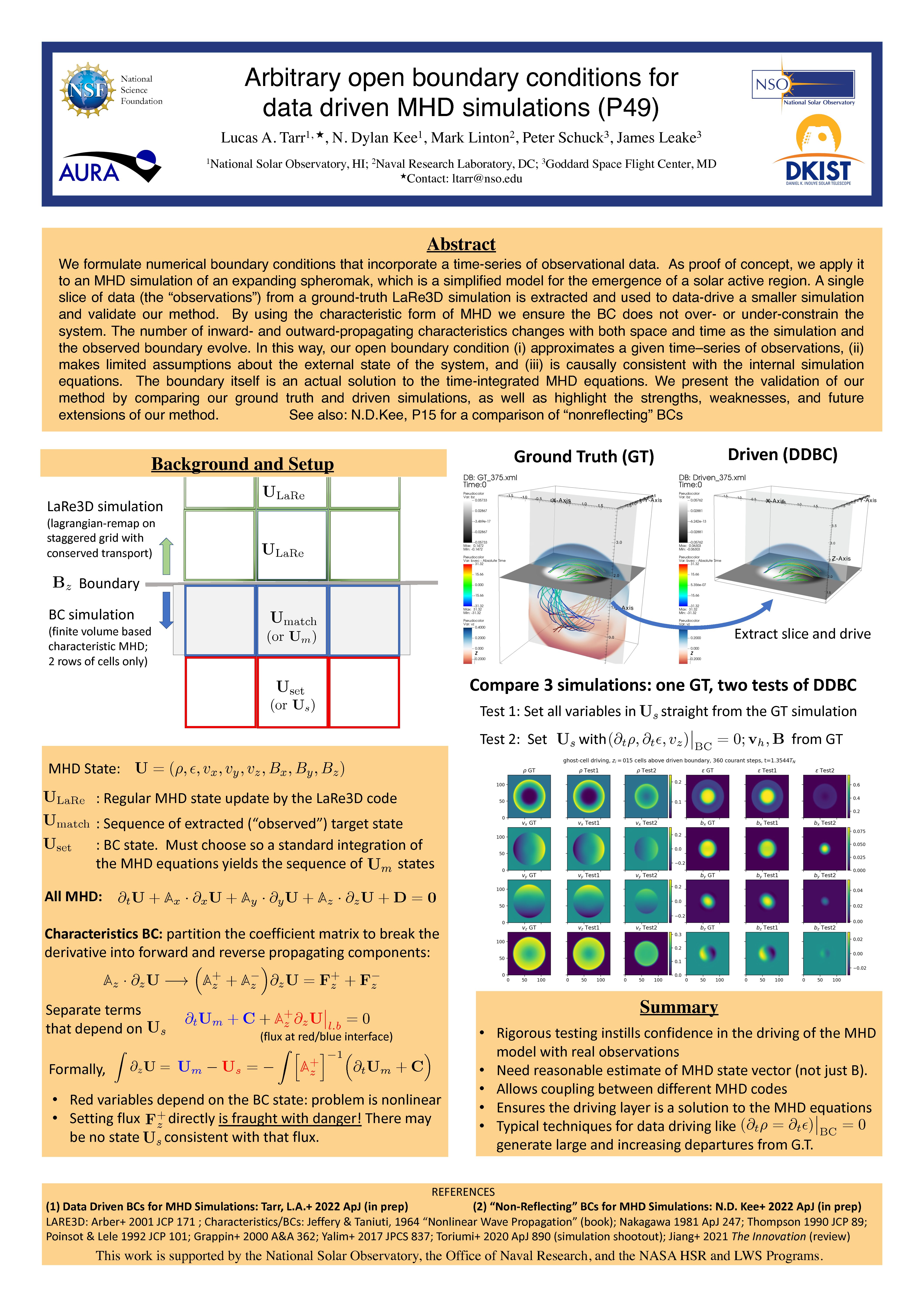Authors: Lucas A. Tarr (NSO), Dylan Kee (NSO), Mark Linton (NRL), Peter Schuck (GSFC), James Leake (GSFC)
We present a method to formulate numerical boundary conditions for systems with hyperbolic terms in the equations that incorporate a time-series of observational data, such as the photospheric magnetic field and plasma quantities. Our method was designed with data from the Helioseismic and Magnetic Imager onboard the Solar Dynamics Observatory in mind, but as a proof of concept we apply it to a magnetohydrodynamic simulation of an expanding spheromak. This is a highly simplified model for the emergence of a solar active region. A single slice of data from a ground-truth LaRe3D simulation is extracted and used to data-drive a smaller simulation and validate our method.
The observed time evolution of the primitive variables at the driven boundary is due to the combination of physical processes originating both inside and outside the data-driven simulation. We use the characteristic decomposition of MHD into generalized eigenmodes to calculate the boundary condition that appropriately combines outward propagating and inward propagating information; i.e., it does not over- or under-constrain the system. The number of inward- and outward-propagating eigenmodes changes with both space and time as the simulation and the observed boundary evolve. In this way, our open boundary condition (i) approximates a given time–series of observations, (ii) makes limited assumptions about the external state of the system, and (iii) is causally consistent with the internal simulation equations. The boundary itself is an actual solution to the time-integrated MHD equations. We present the validation of our method by comparing our ground truth and driven simulations, as well as highlight the strengths, weaknesses, and future extensions of our method.



